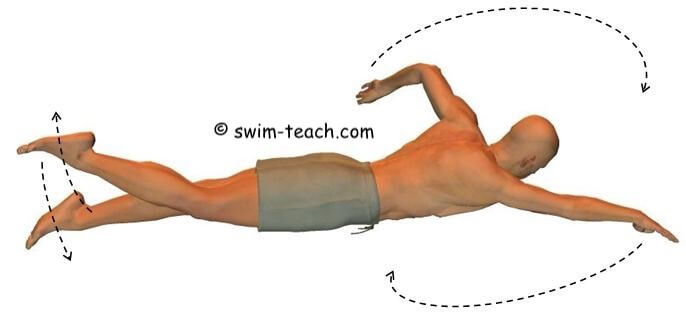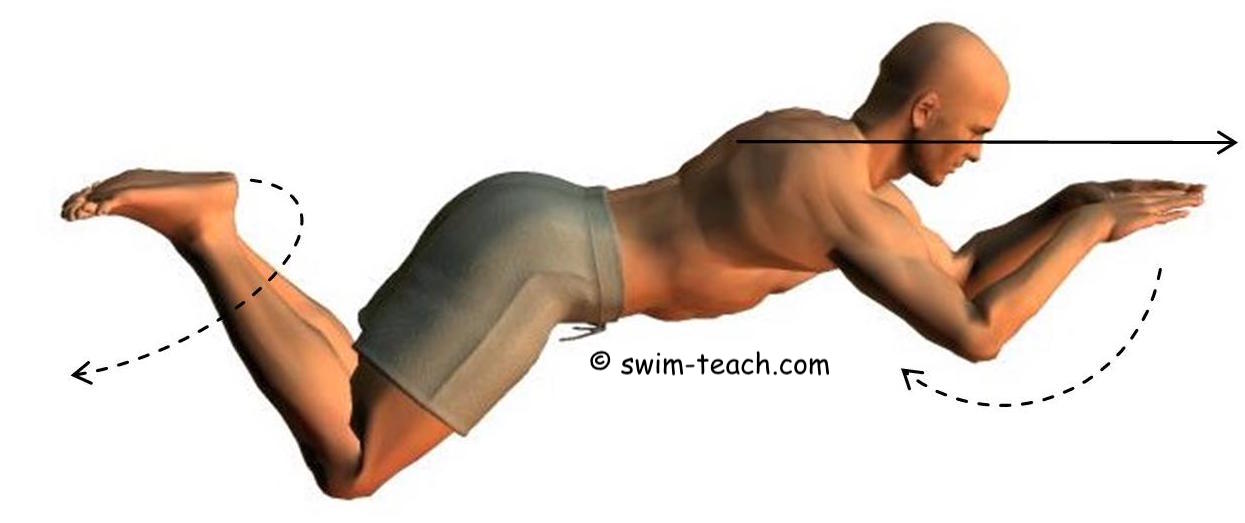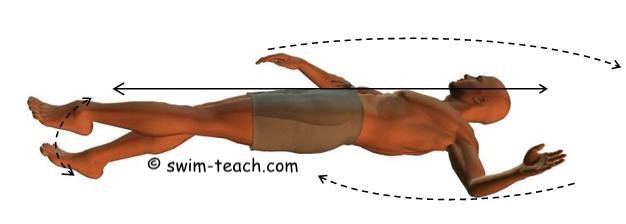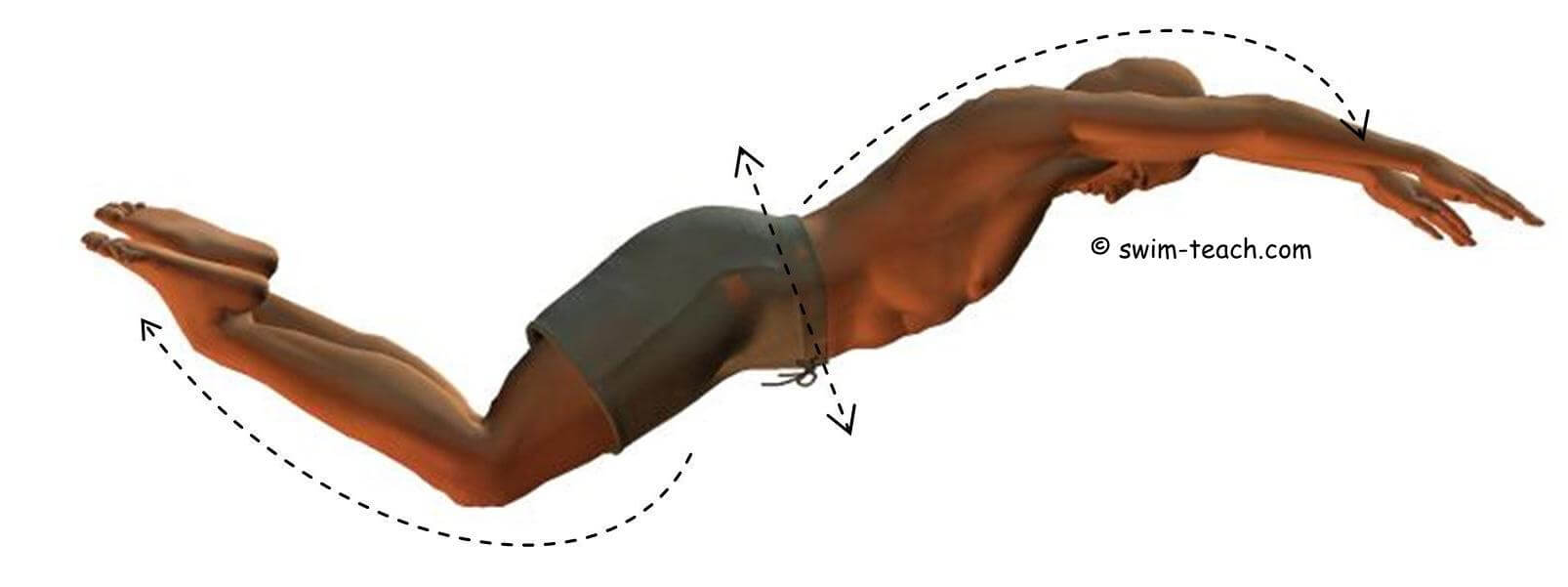- Swim Teach Home
- basic strokes
A Simple Guide to Basic Swimming Strokes
Want to master the basic swimming strokes, avoid common mistakes, or improve your technique? Have you always wanted to swim better front crawl? Would you like to swim smooth breaststroke? Are you looking to improve your swimming stroke efficiency? You've come to the right page!
We'll explore the four basic swimming strokes - freestyle, breaststroke, backstroke, and butterfly - in a simple and beginner-friendly way. Each stroke section includes easy-to-understand steps, gentle encouragement, and supportive tips to help you or your learner build comfort and skill in the water - one stroke at a time.
Freestyle (Front Crawl)
A Great First Stroke to Learn
Freestyle, also called the front crawl, is often the first of the basic swimming strokes taught - and for good reason. It's natural, smooth and characterized by alternating arm movements and leg kicks.
How to Do It:
- Body Position: Maintain a horizontal, streamlined position with your face in the water and your body aligned.
- Arm Movement: Each arm pulls underwater from an extended position down to your thigh and then recovers above the water in an alternating action.
- Leg Kick: With the movement originating from the hips, perform a continuous relaxed kick by alternating your legs up and down with relaxed ankles.
- Breathing: Turn your head and shoulders to the side to inhale during the arm recovery phase and exhale underwater.

Common Mistakes:
- Sinking Legs: Keep your hips up to maintain a horizontal position. Engaging your core can help prevent your legs from sinking.
- Overreaching: Avoid crossing your arms over the centerline of your body during the pull phase.
- Holding Breath: Exhale continuously underwater to maintain a relaxed breathing rhythm.
My Top Tips...
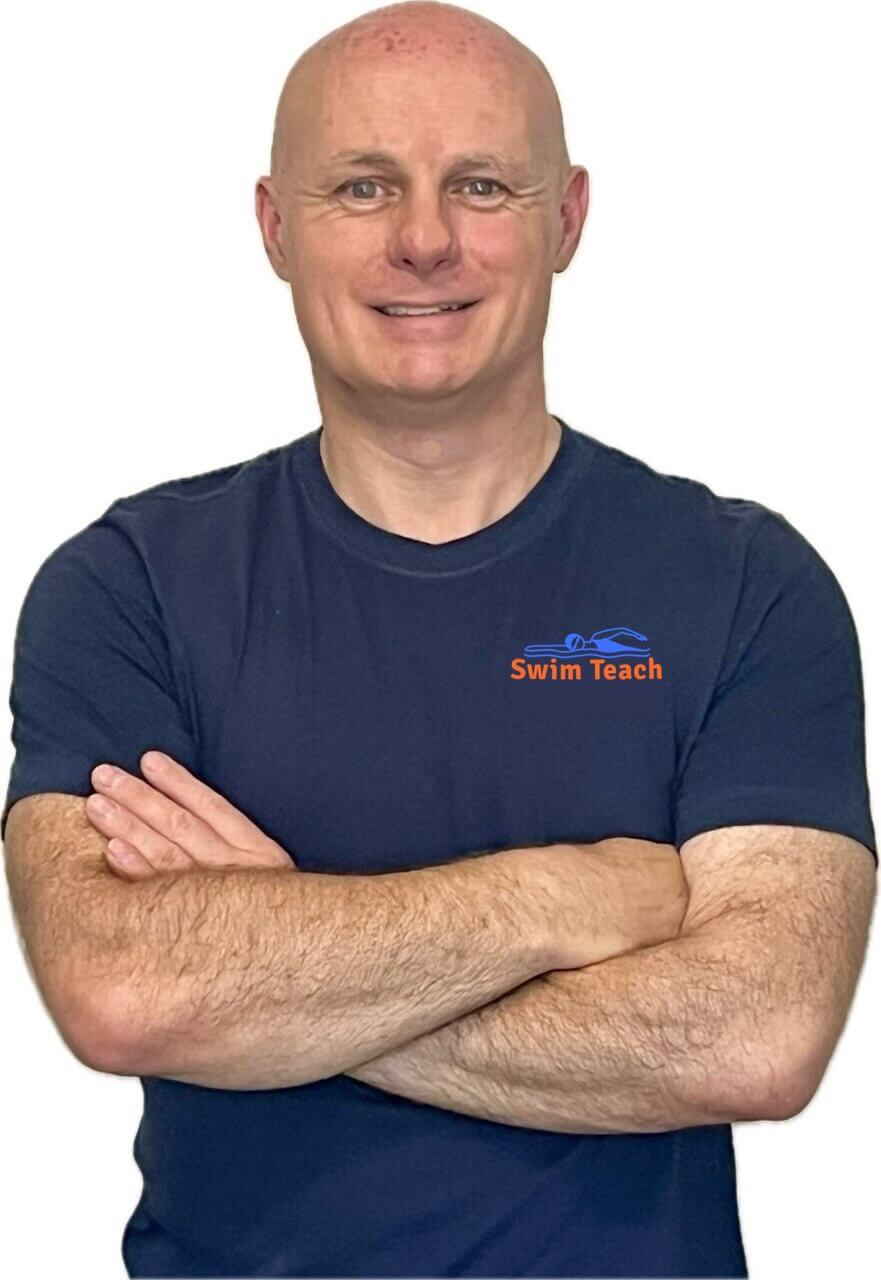
"Over the years, I've seen many beginners struggle with breathing timing. The best advice I can give is to simply go slow! Practice with short swims, take your time, and build from there.
It is also very common to find your hips or legs sinking. A few years back, I taught a triathlete who experienced this as they increased their distance and fatigue began to kick in. We adjusted his head position to ensure he was looking down and also got him to stretch forward and make his strokes longer. This transformed his body position and enabled him to swim longer distances whilst maintaining a streamlined shape."
Breaststroke
A Calm, Rhythmic Stroke That Many Beginners Love
Breaststroke is often considered the easiest of the four basic swimming strokes for beginners to learn. Its gentle glide and slower pace make it ideal for building confidence and control. It involves simultaneous arm and leg movements with a glide phase.
How to Do It:
- Body Position: Keep your body flat and horizontal, with your head in a neutral position.
- Arm Movement: Start with your arms extended forward, then pull them around and back simultaneously in a circular motion to your chest, and extend them forward again.
- Leg Kick: Perform a whip kick by bringing your heels toward your buttocks, turning your feet outward, and kicking back in a circular whip-like motion.
- Breathing: Lift your head to inhale during the arm pull and exhale as you extend your arms forward and glide.

Common Mistakes:
- Timing Issues: Ensure your arm pull and leg kick are coordinated to avoid slowing down.
- Insufficient Glide: Allow a brief glide phase after each kick to maximize efficiency.
- Head Position: Avoid lifting your head too high when breathing, which can cause your hips to drop.
Magic Words...

"Sometimes, the simplest teaching point can erase some confusion and bring clarity to a pupil's learning. One time, a lady I was teaching found the breaststroke sequence of "pull, breathe, kick, glide" too tricky to get her head around and kept getting herself in an awful mess! She was becoming increasingly frustrated so, I asked her to try 'kicking your hands forwards'. This proved to be a revelation for her as she stretched her arms forward into a glide every time she kicked her legs around and back. Her feelings of frustration instantly turned to elation. Just the right words can make all the difference!"
Backstroke
Great for Those Who Prefer to Keep Their Face Out of the Water
Backstroke is the only stroke performed on your back, making breathing easier but requiring good orientation. Like front crawl, it's an alternating stroke requiring similar timing and coordination patterns.
How to Do It:
- Body Position: Lie flat on your back with your body horizontal and your head in a neutral position, looking upward and your hips close to the surface.
- Arm Movements: Lift one arm at a time straight above and in line with your shoulder, then let it slice into the water with your palm facing outwards and sweep down by your side.
- Leg Kick: Use an alternating kick with relaxed ankles, keeping your legs straight and alternating up and down movements.
- Breathing: Since your face is up, breathe normally. Relax your neck and trust the water to support you.

Common Mistakes:
- Sinking Hips: Engage your core muscles to keep your hips up and maintain a streamlined position.
- Overrotation: Keep your head in as neutral a position as possible to reduce body rotation and prevent zigzag swimming.
- Arm Entry: Ensure your arms enter the water in line with your shoulders to maintain balance and a streamlined body shape.
Supportive Tip:
- If you feel like you're sinking, try lifting your chest and relaxing your knees and ankles as you kick. Feel your toes breaking the surface of the water.
Butterfly Stroke
A Powerful Stroke for When You're Ready to Try Something Challenging
Butterfly might look a bit intimidating at first, but it's an excellent way to build strength and rhythm in the water. It feels like a graceful wave once you get the hang of it.
How to Do It:
- Body Position: Start flat on your stomach with your body poised to move in a smooth, undulating motion, with your head leading the movement.
- Arm Movements: Move both arms together in a circular motion - pulling underwater to your thighs and recovering above the surface.
- Kicking: Keep your legs together and kick like a dolphin - both feet moving simultaneously in a fluid, wave-like motion from your hips.
- Breathing: Lift your head as your arms come out of the water. Breathe quickly, and then return your face into the water and exhale.

Common Mistakes:
- Timing Errors: Coordinate your arm movements and dolphin kicks to maintain rhythm and propulsion. Think 'kick, pull, kick, recover'.
- Overexertion: Focus on a smooth, undulating body movement rather than power to prevent early fatigue.
- Breathing Late: Time your breath with the arm recovery to avoid disrupting your stroke.
Gentle Reminders for Beginners
- Progress Over Perfection: Learning to swim is a journey, and it's okay if it takes time.
- Break It Down: Focus on one skill at a time. Isolate arm or leg movements if full strokes feel too complex.
- Celebrate Small Wins: Each improvement - no matter how small - is worth recognizing and applauding.
- Use Tools If Needed: Kickboards, pull buoys, or even pool noodles can offer the extra support a beginner needs.
Mark's Top tips...

"After 30 years of teaching adults how to swim, here's what I always say: start with breaststroke. Why? Because the wide arm and leg movements can give a greater sense of balance. Plus, you can look forward when you breathe and see where you're going I remember one adult learner, terrified of water. But once we started with breaststroke in shallow water, her confidence soared.
If I could teach you one thing about swimming any of the basic strokes in swimming, it's to feel your way through the water, don't fight it. If you begin to feel like it's all too much like hard work, change down a gear and go slow. Feel it, don't fight it.
Hang in there, be patient and determined and above all, enjoy it.
For more information about me and Swim Teach, click here.”
The Basic Swimming Strokes Book
Time to polish up and fine-tune your basic swimming techniques? Download 'The Swimming Strokes Book', which I designed to take your strokes apart and take a closer look at what each part of your body should be doing. Click here for an instant preview.
Practising drills focusing on specific areas, such as body position, breathing, leg kick, or arm action, can help fine-tune those areas and create a smoother and more efficient swimming technique.
Click below to download now, or click here for more information.
 The Swimming Strokes Book
The Swimming Strokes Book$16.99

I am a member of the Amazon Associates Program and I will earn a commission from qualifying purchases at no extra cost to you.

